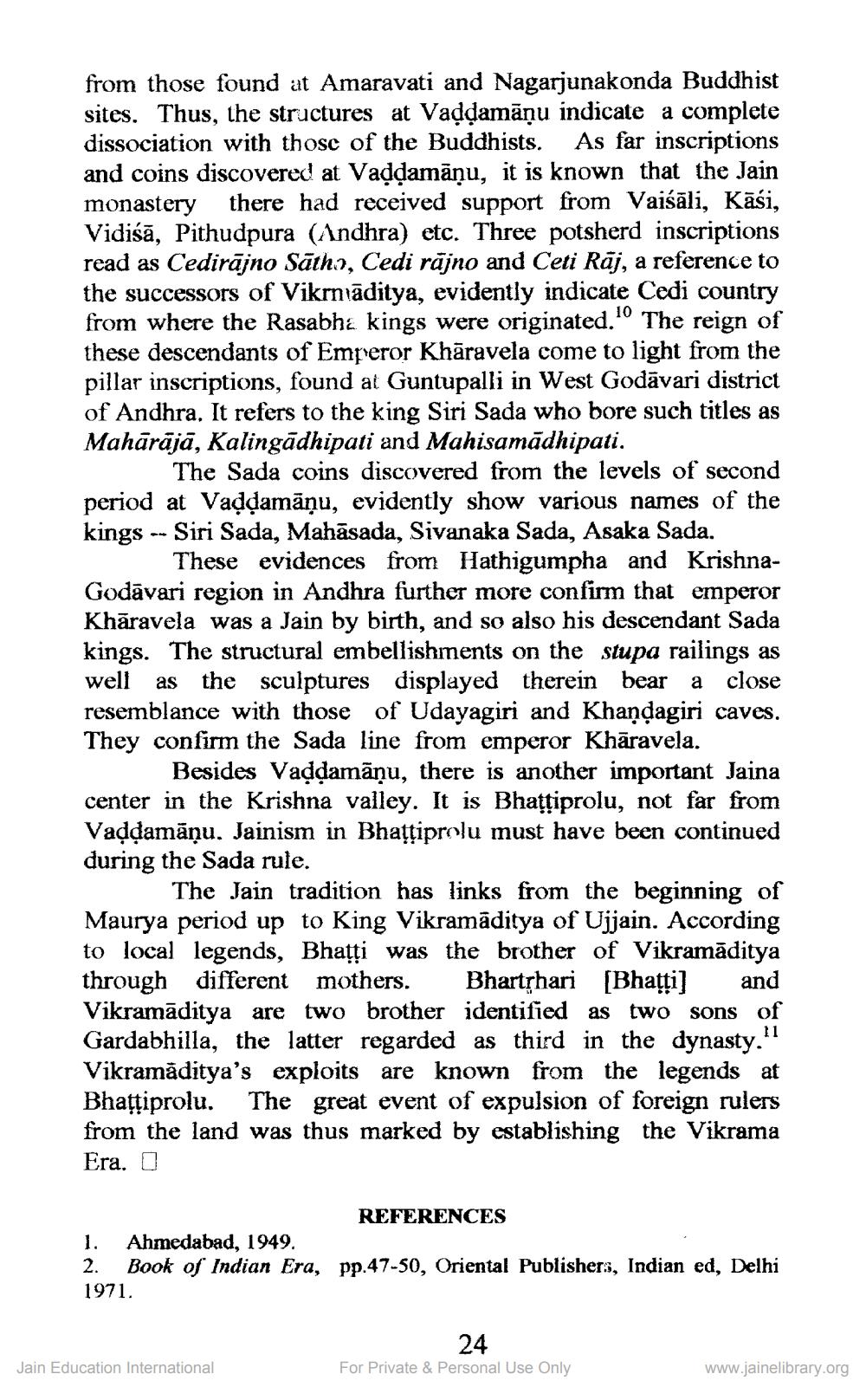________________
from those found at Amaravati and Nagarjunakonda Buddhist sites. Thus, the structures at Vaddamāņu indicate a complete dissociation with those of the Buddhists. As far inscriptions and coins discovered at Vaddamāņu, it is known that the Jain monastery there had received support from Vaiśāli, Kāsi, Vidiśā, Pithudpura (Andhra) etc. Three potsherd inscriptions read as Cedirajno Satho, Cedi rajno and Ceti Rāj, a reference to the successors of Vikrmaditya, evidently indicate Cedi country from where the Rasabha kings were originated.10 The reign of these descendants of Emperor Khāravela come to light from the pillar inscriptions, found at Guntupalli in West Godavari district of Andhra. It refers to the king Siri Sada who bore such titles as Mahārājā, Kalingādhipati and Mahisamādhipati.
The Sada coins discovered from the levels of second period at Vadḍamāņu, evidently show various names of the kings - Siri Sada, Mahāsada, Sivanaka Sada, Asaka Sada.
These evidences from Hathigumpha and KrishnaGodavari region in Andhra further more confirm that emperor Khāravela was a Jain by birth, and so also his descendant Sada kings. The structural embellishments on the stupa railings as well as the sculptures displayed therein bear a close resemblance with those of Udayagiri and Khandagiri caves. They confirm the Sada line from emperor Khāravela.
Besides Vaddamāņu, there is another important Jaina center in the Krishna valley. It is Bhattiprolu, not far from Vaḍḍamāņu. Jainism in Bhattiprolu must have been continued during the Sada rule.
The Jain tradition has links from the beginning of Maurya period up to King Vikramaditya of Ujjain. According to local legends, Bhatti was the brother of Vikramaditya through different mothers. Bhartṛhari [Bhaṭṭi] and Vikramaditya are two brother identified as two sons of Gardabhilla, the latter regarded as third in the dynasty." Vikramaditya's exploits are known from the legends at Bhattiprolu. The great event of expulsion of foreign rulers from the land was thus marked by establishing the Vikrama Era. O
11
1. 2. 1971.
Ahmedabad, 1949.
Book of Indian Era, pp.47-50, Oriental Publishers, Indian ed, Delhi
REFERENCES
Jain Education International
24
For Private & Personal Use Only
www.jainelibrary.org




